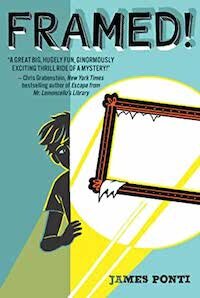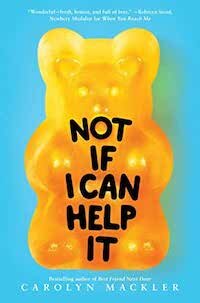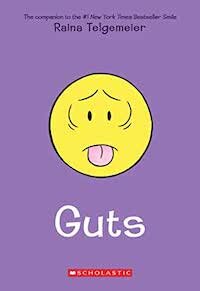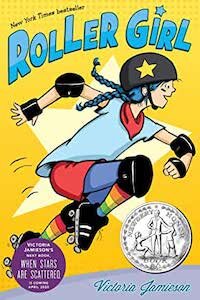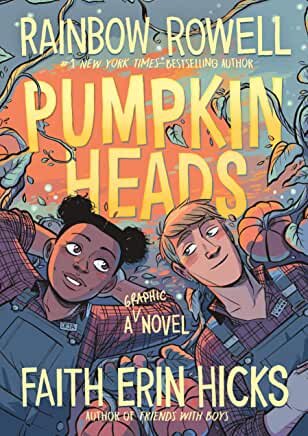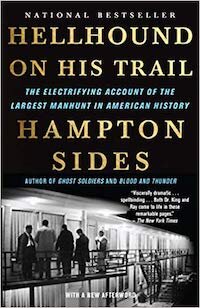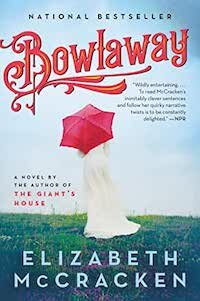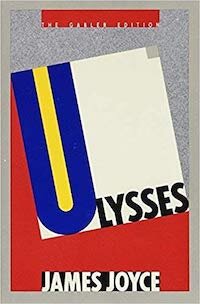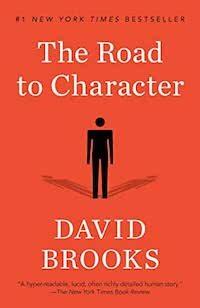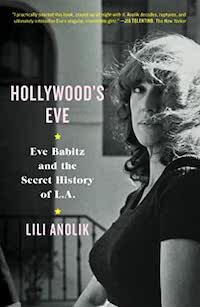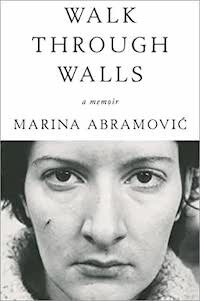As the year draws to an end, we asked a few of our favorite book people to share their most memorable reading experiences over the past twelve months, regardless of publication date. Other than reading itself, few things in the life of a reader are more exciting than hearing from others who share our passions. We hope that the following titles and recommendations add to your list as it did to ours.
JENNIFER LEVASSEUR
There’s a popular misconception that if you work as a bookseller or writer, you spend your days with a cup of tea or coffee at your elbow as you settle into book after book for pure pleasure. Only on those rare occasions when a customer wants to make a purchase or you’re under deadline do you actually “work” in any serious, selfless way. Oh, were it true!
While booksellers and writers are among the most serious, well-rounded readers I know, most of that work is done on their own time so that when they face the blank page or someone who wants a recommendation, they can deliver what’s needed. When your job is, essentially, to read for others, you come across some surprising works, ones you’d never have picked up in your leisure. Some of these become favorites, or even send your life on a completely different track.
For the past fifteen months, I’ve been working on a library science degree. Having completed an MA and PhD and published books and articles, I thought it would be challenging, but nothing compared with the rigors I’d already been through. I could not have been more wrong. Some of the major results of this degree so far have been: a renewed admiration for what librarians do every day to aid others, damaged eyesight, a big increase in my office supply budget (to buy copy paper by the case to print my never-ending readings)—and a huge dip in my yearly book reading tally. Another change: I read kids’ books on the job as a school librarian, and I’m encouraged to do so. It still feels illicit, but I’ve made my way through countless young adult graphic novels, and lots of non-graphic ones, too. The best of kids’ literature is pretty great. I was won over by Roller Girl by Victoria Jamieson, Framed! by James Ponti, Guts by Raina Telgemeier, and Not If I Can Help It by Carolyn Mackler.
All that said, these are some of my favorite grown-up books of 2019. I’ve missed more than I wanted to, and notable omissions are due to my own limitations rather than a statement about the books themselves. For instance, I’m desperate to read The Yellow House by Sarah Broom, which I could tell from the first page would have been in this round-up had I not had to wait until the break to properly read it.
Memories of the Future by Siri Hustvedt
This novel about memory left me energized, uncomfortable, baffled, and unsure. More than ever, Hustvedt prods the reader and tests how much discomfort we can bear in the quest to understand our own humanity. The plot is simple: a woman remembers her young adulthood, including her friendships and an obsession with an unusual neighbor, in New York in the 1970s, but a journal from the time that she finds challenges her memories. This leads to a rich, heady meditation on love, obsession, and desire.
Machines Like Me by Ian McEwan
In an alternate past in which Alan Turing lives to an old age and AI becomes viable in the 1980s, a man without much of a life plan gambles his entire inheritance on the purchase of a humanoid robot. Because this is McEwan, you already know how horribly wrong this goes, how ethics and morals are tested, and that there’s at least one horrific scene to make you wonder about our collective future. A fascinating look at how technology can make us less human even as it becomes more humanlike.
Hellhound on His Trail by Hampton Sides
This extraordinarily researched history of James Earl Ray in the months leading up to the assassination of Martin Luther King Jr. and the long months of Ray’s run from justice—to Canada, England, and Portugal as he tried to secure passage to Zimbabwe (then Rhodesia)—reads like a literary thriller. Sides combines little-known anecdotes about the Civil Rights Movement with Ray’s strange history (including his previous jailbreak, multiple aliases and rhinoplasty, and attempt to become a pornographer) to create a portrait of a troubled, angry man who attempted not only to kill a man but a movement.
Madame Fourcade’s Secret War: The Daring Young Woman Who Led France’s Largest Spy Network Against Hitler by Lynne Olson
A beautiful young mother and a society darling, Marie-Madeline Fourcade would not have easily been pegged as a spy. Not only was this the case; she led Occupied France’s largest spy network. Because she was known by the codename Hedgehog, many of her operatives and the Allies she worked with were long unaware that she was a woman. They expected a seasoned man. Her group’s intelligence about and maps of Normandy’s beaches provided essential information that led to the Allies’ success. Her dramatic escapes—including one that involved her stripping off all her clothes to slip through prison bars—wouldn’t be believed in a novel.
Bowlaway Elizabeth McCracken
Elizabeth McCracken tends to choose surprising, even off-kilter topics for her fiction: a librarian in love with a giant, a comedy duo from Iowa. I’m not sure anyone else could pull these plots off, but she manages to make them seem like the only things anyone should be writing about. In this latest novel, her first since 2001, she follows a woman with a shifting past who takes over a candlepin bowling alley in small town Massachusetts. There’s electricity in McCracken’s prose. Her humor always contains seeds of deep pain, the possibility of redemption, and reflections on where, exactly, we might belong. I’ll read anything she publishes.
Little by Edward Carey
I’m a sucker for big, expansive historical novels that chronicle real people, especially ones whose names we all know but likely know little about. Little follows the orphan who becomes Madame Tussaud of wax-museum fame by way of a forced apprenticeship with a doctor who made wax replicas from human organs and the terrors of the French Revolution. Carey’s also a wonderful artist, and his pen-and-ink drawings appear throughout the text.
The Nickel Boys by Colson Whitehead
A black teenager in the Jim Crow South is on his way to college when a small lapse in judgement upends his bright future, landing him in a brutal segregated reformatory. Based on the abuse and murders of children at the Florida School for Boys (which remained in operation until 2011), The Nickel Boys faces ugly truths.
Memento Park by Mark Sarvas
I loved Sarvas’s first novel, Harry, Revised, a comic story about a man who decides to use The Count of Monte Cristo (abridged) as his guide to life after his wife’s untimely death. Sarvas’s new novel, Memento Park, contains a similar humor even as it tackles huge questions about the legacy of the Holocaust, words left unsaid among families, and self-sabotage, all while exploring the complexities of reparation of Nazi-looted art.
Jennifer Levasseur is a writer, editor, and librarian.
MICHAEL MARTIN
Like just about everyone I know, I was going to “get to” Ulysses. And soon. Any decade now. You watch. I’d report back. And after a week in Dublin this past summer working with Irish poet Martina Evans, I returned home and found my copy of Joyce’s bracing, intimidating masterwork and away I went.
Ulysses.
Finally.
I guess things find us when we need them.
Like Schoenberg’s music or trying cold showers for a winter. A sibling showing up at the door or fornicating with some stranger — anything that addles and upturns the old mind.
Stream-of-bawdy. Stream-of-funny. Stream-of-consciousness. All in Joyce’s Ulysses, as promised.
The story, the “narrative” as we say — a document of a single day in the life of Dubliner Leopold Bloom, Jewish advert sales guy, meandering through his world one more June day in early Dublin 1900s.
It’s a funeral here, a sandwich there. Another drink. His wife’s affair in her own voice and on and on it goes. Small, pertinent supporting cast. Seven hundred pages of enunciated hot minds, each like yours and mine, attendant with the machinations of memory and idea.
I kept thinking of William Carlos Williams —
So much depends
upon a red wheel
barrow …
or ….
so much happens on the drive
to the store
to fetch
a gallon of 2% fat milk.
What I take home from Ulysses is Samuel Beckett. During the years they shared in Paris, Joyce’s protege was hell-bent on becoming the mini-Joyce. Mercifully, he bombed. The early Beckett’s bloated work belied a natural penchant for elimination.
Joyce and Ulysses were pumped full of accrued allusions, always leaning back to the confines of its characters’ minds. When a cool Beckett gets unfettered from “Joycean,” he shapes well-wrought, absurd questions in theater and beyond that I love so much, and it’s that bird-of-prey faced Beckett I saw in Ulysses throughout and am happy for it.
Michael Martin is a poet, writer and editor living in North Carolina. His first poetry collection, Extended Remark: Poems From A Moravian Parking Lot, was published by Portals Press (New Orleans, 2015).
KEVIN RABALAIS
For the past year and a half, I’ve been teaching composition courses to college freshmen. If I’m not exhausted after a fifty-minute class, I assume that I’ve done something wrong. Life is short and literature is long, to borrow from Conrad, and students get younger every year. Meanwhile, the work required to keep up with them increases exponentially. Much of my reading lately, therefore, has attempted to address their needs. I’ve been too slow to realize that what matters to a generation baptized in technology remains, essentially, what has always mattered. How will we fulfill our animal needs—feeding and clothing ourselves, etc.—so that we can carve out enough time to focus on our human needs? In the classroom, David Brooks’s The Road to Character has helped us ponder this question and many others. Brooks examines the constant conflict we undergo as we hone what he deems our “resumé virtues” and “eulogy virtues.” You can’t have one without the other, sure, but he’s helped us discuss not just what we want to do to get paid but also how we want to become.
One book that I’ve added to my syllabi, Matt Richtel’s A Deadly Wandering, chronicles the story of a young man who, texting while driving along a lonesome Utah road, kills two rocket scientists in an oncoming car. He interweaves this story with researchers in the cutting-edge field of the science of attention. The result is nothing short of an In Cold Blood for our age of distraction. It should be required reading for anyone who has ever held a smart phone or conducted a Google search.
My favorite discovery this year makes me want to shout from the rooftops: Where have you been all of my life, Eve Babitz? Babitz began her career in the 1960s designing album covers for The Byrds, Buffalo Springfield and Linda Ronstadt. A short list of her romances in the ’60s and ’70s positions her in diverse L.A. centers: Jim Morrison, Harrison Ford and Steve Martin. Stravinsky was her godfather. She has a cameo in The Godfather, Part II. That’s her, age twenty and nude, playing chess with Marcel Duchamp in Julian Wasser’s famous photograph. If Edie Sedgwick could write like Joan Didion, you’d get someone with the electric wit and razor-sharp prose style of Eve Babitz. This year, her collections Slow Days, Fast Company and I Used to be Charming (those titles!) commanded my attention even more than The White Album or Slouching Towards Bethlehem, and I’m not going to let myself feel bad about that. (Didion, I’ll always love you and your way with the American sentence.)
Lili Anolik’s Hollywood’s Eve: Eve Babitz and the Secret History of L.A. recounts how this talented, enigmatic and, yes, beautiful woman captured a collective imagination in a similar way to the title character in Taylor Jenkins Reid’s novel Daisy Jones & The Six. I’m always on the lookout for great novels about rock and roll. This one, which Reid delivers in the form of an oral history of a band, belongs on the shelf next to Don DeLillo’s Great Jones Street and Jerzy Kosinski’s Pinball. Through voices of band members, family, friends, studio engineers, music journalists and others, Reid administers all of the sex, drugs and rock and roll that we expect, but the novel rises above a breezy beach read through its intricate focus on relationships and the creativity that great collaborations spawn.
Take that last one on vacation, the kind I needed after spending months working on a chapter about the literature of Hurricane Katrina for Cambridge University Press’s New Orleans: A Literary History, edited by T. R. Johnson. At one book launch, Johnson—while being interviewed and, therefore, under oath, I presume—said that he gave me the most difficult assignment: to write about the tragedy of Katrina for the book’s final chapter, though not, I hope, the final chapter of the city’s literary history. The headache (and heartache) that reading and writing about Katrina compels me to believe him, but the staggering range throughout the book (from the city’s founding to Lafcadio Hearn, Louis Armstrong, Shirley Ann Grau and Maurice Carlos Ruffin) makes this an indispensable work about a small place whose music, cuisine and culture occupy major real estate in the world imagination.
Around this time, I always designate the coming months as The Year of Reading Dangerously. I recognize that I’ll fail literature more often than literature fails me. This year, because of consistent failures—mainly abandoning books for no other reason than that I couldn’t live up to their demands—I made a (not so) radical decision to stop reading male authors for a few months. I met Babitz and read Marina Abramović’s Walk Through Walls, a remarkable memoir about growing up in Tito’s Yugoslavia with dreams of creating the kind of art that would leave us one step in her wake. I reencountered Annie Dillard and Mary Oliver (1935-2019). The charge of their lines lingers, and I look forward to carrying them into the new year and beyond. Knowing that their words are out there, alive and willing to instruct, reminds me that I—that all of us, in these unfathomable times—can do and be better.
“Tell me, what is it you plan to do / with your one wild and precious life?” asks Oliver at the end of “The Summer Day.” And here is Dillard, in The Writing Life: “How we spend our days is, of course, how we spend our lives. What we do with this hour, and that one, is what we are doing.”
A great book is a shot of adrenaline to the soul. May you all have deep and rich lives in the new year. And please share your reading lists.
Kevin Rabalais teaches in the English department at Loyola University New Orleans and is working on a documentary photography project about Louisiana.
DANIEL STEPHENSEN
As the fiction publishing industry has contracted, much of the work of producing innovative fiction, in particular novels that make new possibilities for genres, has been taken on by small presses. Melbourne’s Transit Lounge, the publisher of Inez Baranay’s Turn Left At Venus, is among these small presses, and Baranay’s novel is an important achievement in literary and genre writing. In 2011, Baranay published a vampire novel, Always Hungry (Press On; Local Time), followed in 2015 by a ghost story, Ghosts Like Us (Local Time), both of which used their genres as foundations for entertaining, poetic, philosophical stories about women’s artistic freedom, human bodies, creative ambition, and gender and identity creation and re-creation across time. With Turn Left At Venus, Baranay has added a literary science fiction novel to her genre work.
Ada’s childhood migration from Europe to Australia during the Second World War introduces her to the English language, an alien tongue that she and her new friend, fellow migrant Leyla, both learn in order to communicate with each other. Settling in Sydney, Ada spends her time reading and learning written English, a technology she uses to relate to the world around her, to time, to her changing body, to the places she lives in and the people she befriends and loves. Her first science fiction novel, Turn Left At Venus, is published in the 1950s under the pseudonym A. L. Ligeti. This and successive novels are feminist, utopian works concerned with identity, gender, mortality, and the relational spaces that bodies and minds encounter and share. Written language allows Ada to bring the futures and worlds she imagines into presence in a way that she finds meaningful; the outcomes of spoken English, on the other hand, are difficult for her to control. In contrast, Leyla has an aptitude for speech, preferring face-to-face communication over writing. Leyla moves to Hollywood and becomes an insider there, while Ada remains a wanderer, an outsider wherever she goes, never really finding spatial belonging, her place in the world. Any belonging she experiences is temporal and transitory, and she is happiest living in rented apartments and hotel rooms, always thinking about the next part of the Earth she might travel to, and what she will write there.
Innovation in science fiction comes from writing both within and outside of the genre’s megatext—the corpus of SF texts and knowledge shared and mutually developed by authors, critics, and fans. The megatext is subject to change over time, in relation to changing contexts of authorship and reading. In exploring Ada’s relation to the world, to her own and other bodies over time, to her imagination, and to alien entities—the migrant ship, the English language, her publishers, her fans, her own death bed—Turn Left At Venus addresses the experience of alienation in human life in relation to Ada’s career as a science fiction writer. This is felt especially in her careful, writerly attention to her ageing body, and to her experience of time through her memories. In a clever supplement to Ada’s story, Baranay also includes fan conversations from Internet forums devoted to A. L. Ligeti and her work, and these sections construct Ada in a different way, from a relational space inside the science fiction megatext.
With Baranay’s beautiful, skillful, inventive writing and formal experimentation, Turn Left At Venus is an entertaining and very re-readable novel.
The other book I want to draw attention to—or return attention to—was published in 2018, Behrouz Boochani’s No Friend But the Mountains: Writing from Manus Prison. This book’s creation is a feat that risks becoming mythical: Boochani, an Iranian Kurdish refugee imprisoned in an Australian refugee detention center on Manus Island in Papua New Guinea (officially the Manus Island Regional Processing Centre, a catastrophic euphemism), composed the manuscript in thousands of text messages sent to translator Omid Tofighian via WhatsApp. In his afterword, Tofighian proposes a relational network of contexts for Boochani’s work: “Rather than categorise his writing as ‘refugee narrative’ or ‘refugee memoir’, the book is better situated in other traditions: clandestine philosophical literature, prison narratives, philosophical fiction, Australian dissident writing, Iranian political art, transnational literature, decolonial writing and the Kurdish literary tradition.” This list is an important reminder that we must read refugee narratives as stories of lived experience with complex philosophical and cultural value.
Joining other desperate, impoverished refugees hoping to reach Australia by boat from Indonesia, Boochani finds himself on a scarcely seaworthy vessel, which takes on water and capsizes mid-voyage. This story is the first part of the book, and is a masterfully written account of an extraordinary, horrifying disaster. The remainder of the book is about the survivors’ detention in Manus prison, their daily life and manifold suffering, and their systematic dehumanization and torture, carried out by Australian private security contractors hired by the federal government. The facts are horrible, frightening, sickening. Boochani’s often surreal writing is beautiful, poetry in prose. The prisoners at Manus are hungry, dirty, sick, tormented by the relentless heat and humidity, brutalized by the guards. There are beatings, suicides, murders. Boochani and his fellow prisoners wither in heat and squalor. They are lied to, given spurious medical treatment, and programmatically deprived of hope. The Manus prison camp is one of the most deranged institutions yet conceived through the bipartisan neoliberal ideology that has come to dominate Australian politics. This ideology has long since murdered the Christian ethics to which Australian prime ministers continue to lay claim. “Lord, when did we see you hungry or thirsty or a stranger or needing clothes or sick or in prison, and did not help you?”
“Whoever was tortured, stays tortured,” wrote Jean Améry, a victim of brutal Nazi torture during the Second World War. Lest we forget. If the refugee processing center at Manus Island were a prison in that war, would we not remain appalled by it? From reigns of absolutism will come the worst and most enduring crimes.
Daniel Stephensen is an Australian writer and illustrator living in Santa Fe, New Mexico. His new children’s book is Cloud and Tree, available via his website forgetlings.net. His Twitter is @forgetlings.
Photos by Kevin Rabalais


